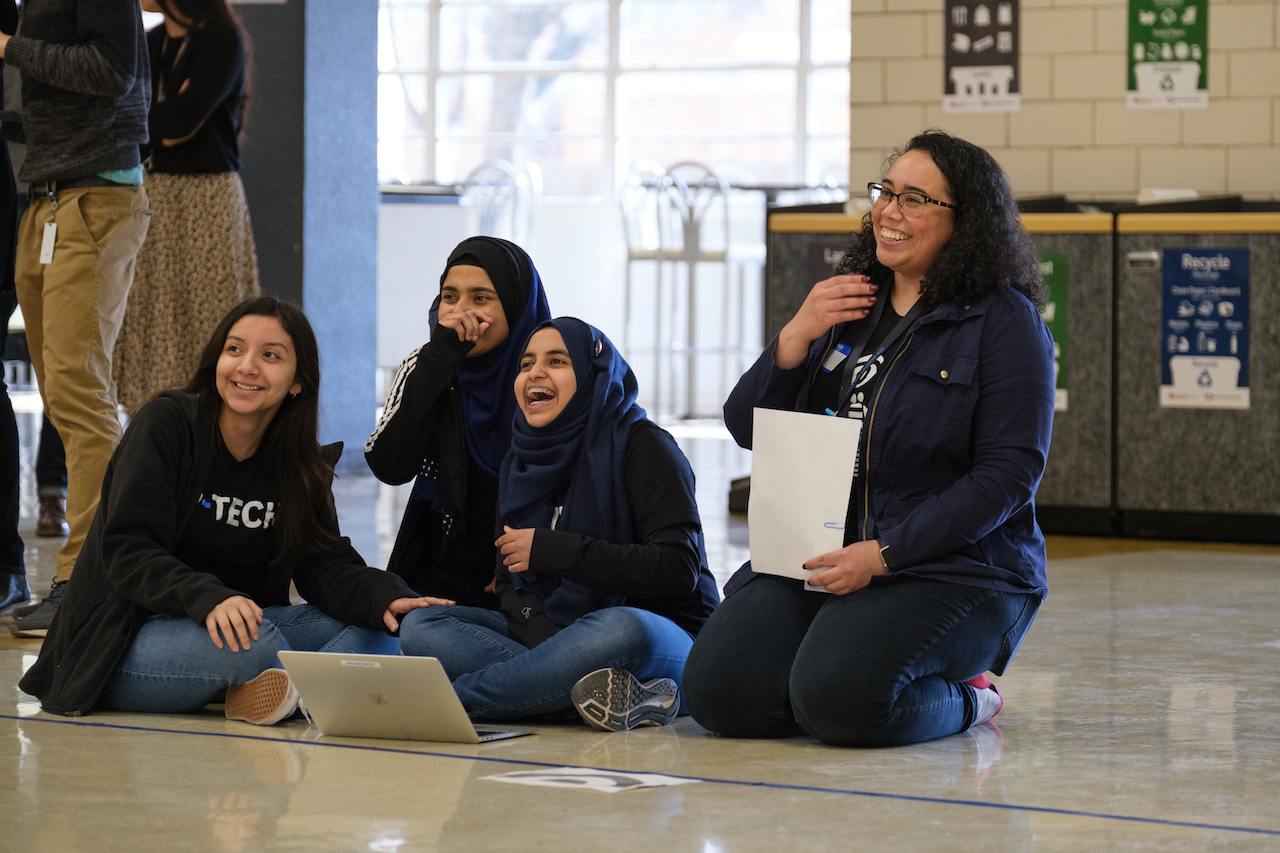How Navarro High School students are using design thinking to build their own learning tools
Article by India Miles • February 25, 2021
Each month, we highlight the innovative things students and educators are doing using the Open P-TECH platform, and share tips and tricks to help teachers shine. This post follows educator Ann Graham, and her work with Navarro high schoolers.
Pairing high school students with early-career developers for collaborative learning
What happens when you ask students to help build their own learning tools? Ann Graham, educator and program manager for the Texas wing of IBM’s Jumpstart Developers, recently did just that. And students are loving it.
Ann affectionately calls her cohort of Jumpstart Developers the “20-somethings”. In the Jumpstart program, entry-level developers participate in a two-year engagement that includes networking, learning new technologies, and developing user-focused IBM solutions.
This past school year, Ann and the Jumpstart Developers have been working with students from Navarro High School in Austin, Texas to design activity kits for Open P-TECH—the free digital learning platform Navarro teachers use to supplement existing curriculum.
Students—with support from their slightly more experienced peers at Jumpstart—are able to put the design thinking principles they’re studying into action. They are learning by doing. Plus, the activity kits they’re helping to build will be available to other students on the Open P-TECH platform, so there’s real-world impact to their work.
Want to bring design thinking skills to your classroom? Visit the Open P-TECH design thinking curriculum page to find out how.
Learning activity kits designed by actively learning kids
Activity kits are hands-on learning activities that allow students to bring Open P-TECH lessons to life. For example, you might use the interactive exercises in an activity kit to supplement a lesson on how to build an effective resume or how to identify a cybersecurity threat.
These kits have been created by platform designers in the past, but Ann was inspired by the idea of a “kid council”; she wondered if the kits would be even more effective if the design stakeholders were students. Her hunch was that building something “for us, by us” would be highly motivating and memorable for these kids.
Ann explained that she really wanted students to “give us their perspective, help us make [the activity kits] fun.” She encouraged the high schoolers to be honest when offering their opinions to their collaborators on the Jumpstart crew. Because, she explained, if the kits are boring, “no one’s going to use them.”
It was a learning opportunity for the developers, too. Ann consistently reminded them to get feedback beyond “yes” and “no” from their student partners. They had to encourage the kids to share what they thought (what they really thought) each time they met. And—like the rest of us—they had to collaborate virtually, which brings its own set of unique challenges.
Empowering students with stakeholder status
Students at Navarro High School continue to work with Ann Graham and the Jumpstart Developers, acting as design stakeholders on this new series of activity kits.
Through collaborative, small-group work, they’re developing activity kits that explore a range of topics, from delving into cybersecurity with a cryptography cipher challenge, to understanding data and artificial intelligence and its connection to augmented reality.
“It’s been pretty interesting to see peoples’ creativity. I think it’s really nice to see peoples’ ideas,” said student Nuvia Matute, as she and classmates were hard at work with design thinking resources. For Ann’s part, she’s hopeful that collaborating with Jumpstart Developers is helping these students see a possible future for themselves: “There’s no reason this can’t be them in eight years,” she explains.
Are you ready to bring this kind of learning to your school or organization?
- Bring Open P-TECH’s free platform to YOUR school or organization
- Partner with IBM and become a P-TECH school
- Keep the momentum going strong with our currently available activity kits
- Dive into design thinking courses along with your students
- Connect with other students on educators in our virtual community, Open P-TECH Connect!
